Here are some of the technologies law enforcement can use to surveil protesters
WASHINGTON — When Minnesota Gov. Tim Walz sparked confusion last month by asserting that the National Security Agency, the nation’s electronic spying organization, was involved in monitoring domestic protests, his remarks drew renewed attention to surveillance of protesters.
The governor later backtracked on the claim, which would have been unlikely, since the NSA’s remit is collecting foreign digital communications and signals. Yet it is true that the government is using a wide range of capabilities and technologies to monitor the growing nationwide protests, which were set off by last month’s killing of George Floyd, an African-American man, in police custody.
Attorney General William Barr recently announced he’d be activating a broad network of FBI Joint Terrorism Task Forces in all 56 field offices, multi-agency partnerships that investigate terrorism that predate the attacks of 9/11 but surged in number afterward. And last week, the Defense Intelligence Agency confirmed to Yahoo News it had set up an internal working group to respond to “appropriate requests” from other government agencies on potential foreign connections with the protests, though there has not been any evidence of such ties.
Law enforcement’s surveillance capabilities are powerful and growing. Here are some of the top technologies that police and other agencies can use to monitor protesters:
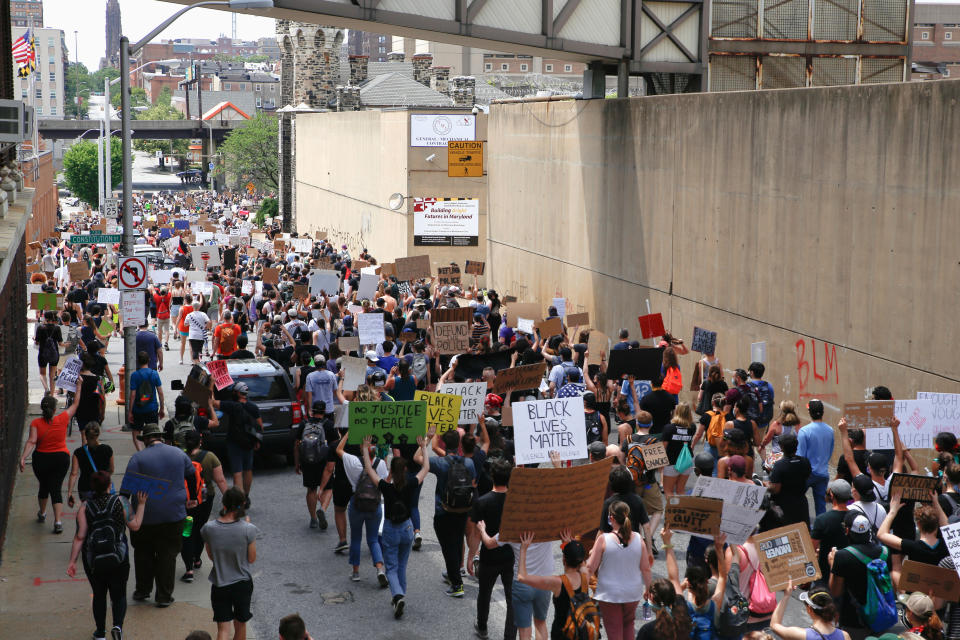
Airborne surveillance
As thousands of Baltimore residents flooded the expressway last Monday night to protest the killing of Floyd, they stood under the watchful eye of spy planes carrying powerful wide-angle cameras tracking their every movement.
At the end of March, the Baltimore Police Department came to an agreement with Ohio-based Persistent Surveillance Systems to deploy a “pilot program” in which three private planes would constantly fly over Baltimore for six months, tracking its more than 619,000 residents in an effort to investigate crime. Local officials have insisted they wouldn’t use the footage for real-time monitoring and that the test would help demonstrate how effective the technology is in “reducing violent crime,” said Police Commissioner Michael Harrison.
However, those same planes, which began flying over Baltimore at the end of April, were also deployed secretly in 2016, including during political protests in response to the Justice Department’s decision to drop charges against the Baltimore police officers involved in the death of Freddie Gray, another black man who died as a result of injuries suffered in police custody. That deployment led to an outcry from citizens and privacy advocates.
When the proposal arose to return the planes to Baltimore’s skies just a few years later, the City Council had little authority to object, as the Baltimore Police Department uniquely falls under state control.
Now that protesters are once again taking to the streets across the country in massive numbers, demanding justice for the deaths of more black Americans in police custody, activists’ concerns about surveillance have only increased.
“I think what the current environment highlights is the danger of giving any government in this country, but particularly the Baltimore Police Department, this incredibly powerful technology, the likes of which has never existed anywhere in this country,” said David Rocah, a senior staff attorney for the American Civil Liberties Union of Maryland, during a phone interview. The ACLU’s Maryland chapter warned protesters on Facebook and Twitter multiple times over the past week that the spy planes were flying over Baltimore, recording their every move.
This particular technology, originally developed by the Pentagon for use abroad to track insurgents planting roadside bombs, is being tested in Baltimore. Persistent Surveillance Systems did not respond to a request for comment about any additional requests for the company’s services in light of the protests and the ongoing pandemic.
However, law enforcement agencies across the country, from the federal level to state and local law enforcement, have access not only to paramilitary gear and vehicles but also to an arsenal of powerful surveillance equipment, technology that privacy advocates say disproportionately affects people of color.
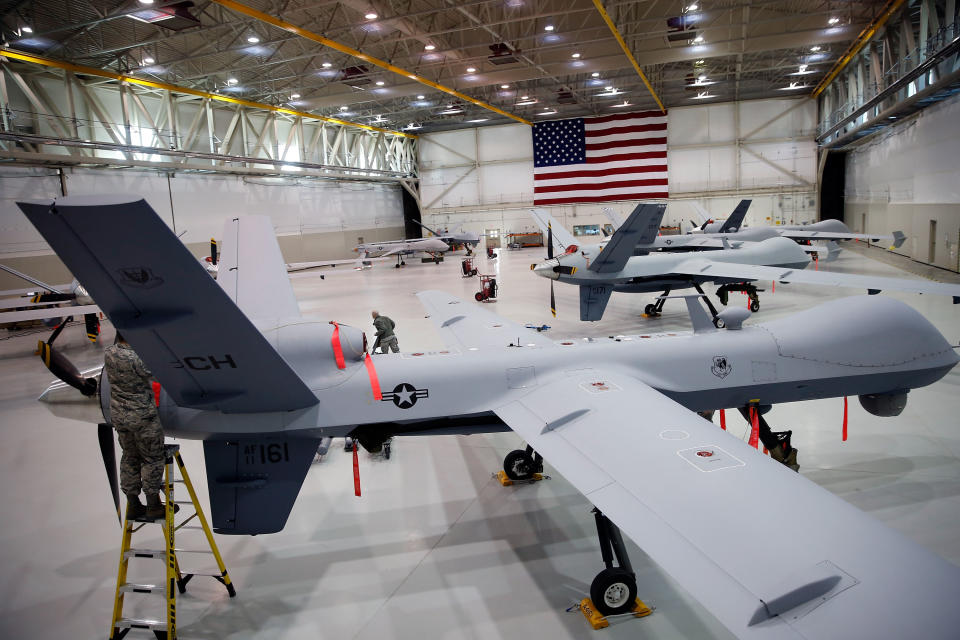
Airborne surveillance beyond Baltimore has included a Customs and Border Protection Predator drone in Minneapolis, FBI spy planes, state and local helicopters and military surveillance aircraft, among others. Journalists, hobbyists and activists have been actively monitoring publicly available flight tracking databases to follow the course of these spy planes each night. Depending on the type of camera aboard the plane, police can have complete recordings of entire cities, able to zoom in on individuals and track their movements.
These overhead surveillance planes help “provide live video to aid in situational awareness at the request of federal law enforcement partners,” explained a Customs and Border Protection spokesperson when asked about its deployment of the Reaper drone over Minneapolis. In 2013, CBP analyzed the potential privacy impact of flying surveillance drones, arguing that its use of the technology “is consistent” with its broad mission “to protect the border and provide support for law enforcement activities” and has the appropriate oversight.
However, as the cameras flown overhead become more powerful, the average person’s understanding of privacy changes, and it opens up the potential for abuse. “It’s the technological equivalent of having a police officer follow you every time you walk out the door,” said Rocah of the ACLU, talking about Persistent Surveillance Systems.
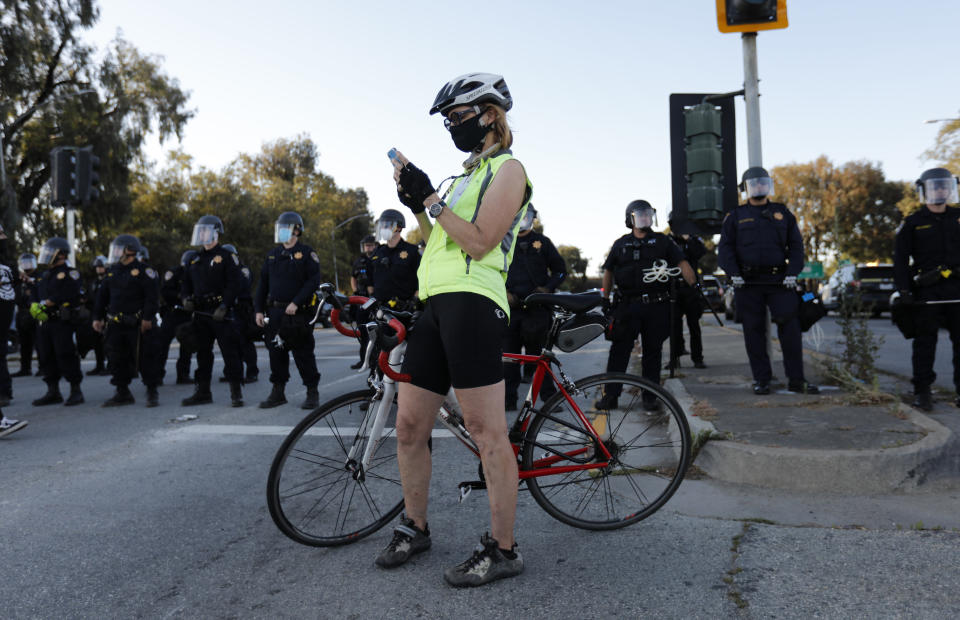
Cell site simulators
Overhead cameras aren’t the only kind of technology that law enforcement carries on planes or transports in vehicles to technically track people. One controversial device that has proliferated across state and local agencies over the past decade or so is the cell site simulator, a bulky device that mimics a cellphone tower in order to trick nearby phones into connecting while looking for service. That allows the devices — often called Stingrays, after a popular product sold by Harris Corporation — to collect information about cellphones within their range.
BuzzFeed reported that the Drug Enforcement Agency was recently authorized to assist in surveillance and other law enforcement activity beyond enforcing drug crimes during the protests, which would allow it to use its surveillance planes’ equipped mobile cell site simulators, called “Dirtboxes.”
According to a map created by the American Civil Liberties Union, a range of federal agencies, including the FBI, the U.S. Secret Service, the U.S. National Guard, U.S. Customs and Border Protection and others, regularly use these kinds of devices, in addition to a large number of state and local authorities, including in regions with large-scale protests, like Minnesota, New York, Florida, Texas and others.
Privacy advocates and journalists have spent years fighting for access to documents about purchase agreements between law enforcement, the FBI and the companies that have sold these devices. Those companies include defense contractor Harris Corporation and Maryland-based technology company KeyW Corporation, according to recent research done by Mike Katz-Lacabe, the director of research and co-founder of surveillance watchdog nonprofit the Center for Human Rights and Privacy.
Multiple Minnesota law enforcement agencies have purchased cell site simulators and for years failed to make information about them public, despite public pressure and changes in law.
In recent years, courts and the Justice Department have acted to limit the warrantless use of cell site simulators. In April 2017, the District of Columbia Court of Appeals ruled that use of a cell site simulator requires a warrant, arguing that any evidence derived from the surveillance device should be tossed out if no warrant was obtained for its use, one of several local court decisions.
In 2015, the Department of Justice self-regulated and announced it would require a warrant supported by probable cause to use cell site simulators in criminal investigations, though critics noted that the policy could easily be reversed and contains loopholes for “all uses of Stingrays where the agency concludes it is impracticable to obtain a warrant,” wrote Faiza Patel, the director of the Liberty and National Security Program at the public policy think tank the Brennan Center for Justice. Additionally, she noted, the policy did not extend to state and local authorities. The FBI did not respond to a request for comment on whether it was following those guidelines for use of cell site simulators during the protests.
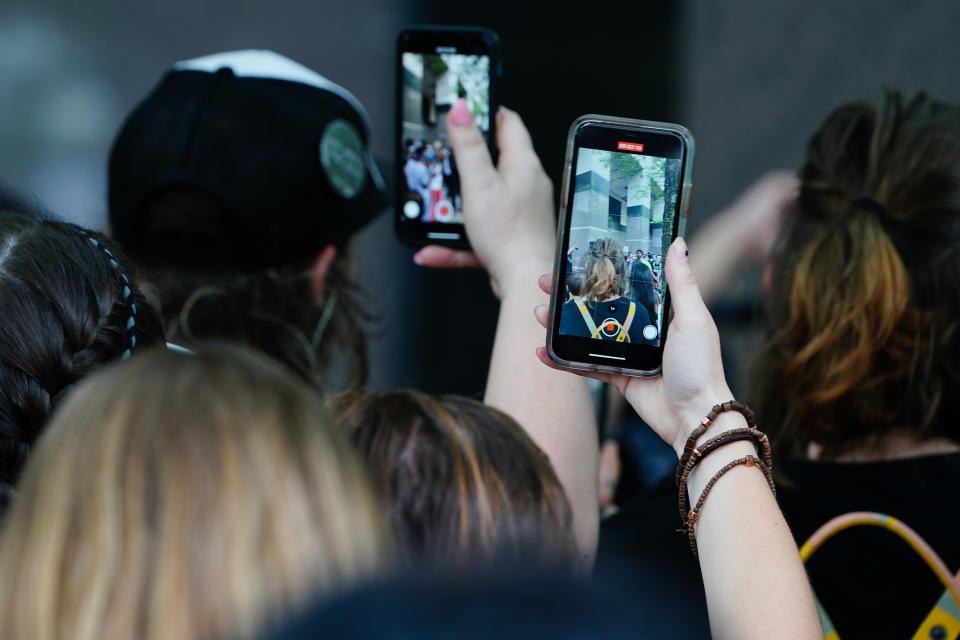
In the past, civil rights groups including Color of Change, the Center for Media Justice and the New America Foundation’s Open Technology Institute have lodged direct complaints with the Federal Communications Commission about the Baltimore Police Department’s use of cell site simulators. “We all know too well that when police have unrestricted power like this it gets disproportionately used against Black communities,” wrote Color of Change in a statement. Additionally, technologists warned, the tech could be dangerous by preventing emergency calls from going through.
It’s unclear which federal, state and local authorities may have deployed Stingrays or cell site simulators for use in the protests. In Oregon, the Portland Police took to Twitter to deny that it is actively “jamming” cellphones. However, activists posted on social media encouraging protesters to put their phones on airplane mode to prevent them from connecting to nearby towers, and to stop law enforcement from being able to seek location records from telecommunications companies after the fact.
According to Freddy Martinez, a policy analyst with Open the Government, a nonprofit dedicated to transparency, protesters on the ground in Washington, D.C., have been deeply concerned about ongoing federal and local surveillance while out on the streets. “We’ve noticed an unprecedented crackdown on civil rights at protests over the last few days,” said Martinez, who spoke to Yahoo News during last Wednesday night’s predominantly peaceful demonstration in front of the White House and later on the phone.
“People should be rightfully wary of government surveillance. In particular, they should be aware their cellphone location data can be very revealing,” he said, encouraging protesters to turn off their phones or take other measures to protect their devices.
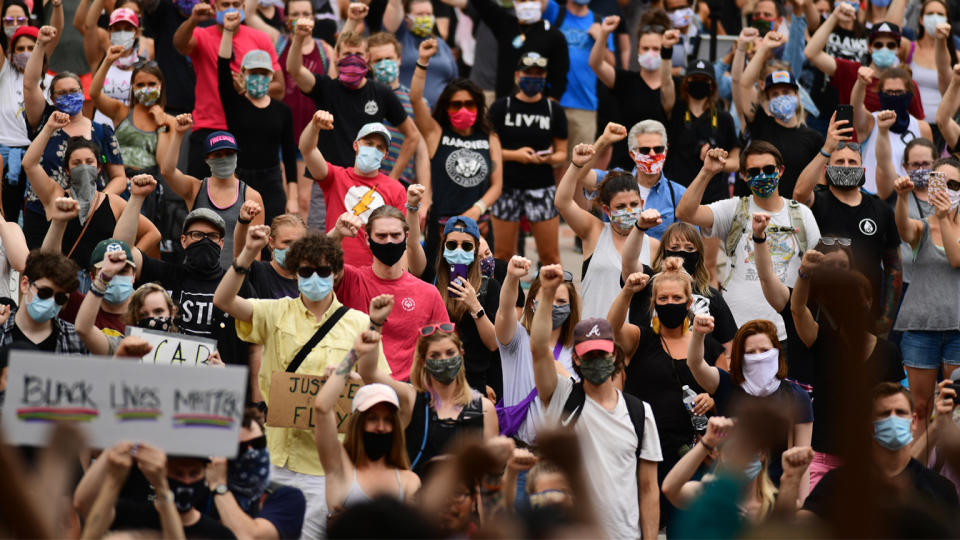
Facial recognition
In addition to being able to track cellphones and record extensive amounts of video and audio around cities using spy planes or CCTV cameras, police have invested in tools that will allow them to automatically sort through the data to recognize faces, analyze behavior, prune through social media and even try to predict where and by whom crimes might next be committed.
Controversial facial recognition software Clearview AI is one example of technology being used by law enforcement, including in Minneapolis, according to recent investigations by BuzzFeed News. The startup has collected more than 3 billion images from across the internet, allowing law enforcement, companies and others to simply upload a picture and wait for a match. And despite the relative privacy that face masks might provide protesters in light of the pandemic, researchers have already been training algorithms to improve their ability to recognize faces using people’s publicly posted selfies wearing masks, uploading massive databases to open source code sharing website Github, which could be used to identify people even if they’re wearing face coverings.
In Detroit, constant video monitoring and use of facial recognition are huge concerns. According to Tawana Petty, director of the Data Justice Program for the Detroit Community Technology Project, she and fellow activists have spent years fighting against the city’s use of facial recognition and other tracking technologies, whose use has only grown amid the coronavirus pandemic and the protests.
Some of those specific programs include Project Greenlight, a public-private partnership that enables local businesses to deploy cameras to monitor storefronts and feed the footage to the local police department for real-time crime monitoring, in addition to aerial surveillance, cell site simulators and other technologies. People are already being ticketed for violating social distancing policies, caught on Project Greenlight’s cameras, but now fear additional surveillance going out to protest Floyd’s death, says Petty.
“We know during the protests there have been drones flying over, in addition to helicopters, we know our Detroit police department has Stingray technology,” she told Yahoo News. “Some of the demands the protesters have right now are, end Project Greenlight, defund police, end facial recognition.”
Petty noted the differences in the ways the technology is used against people of color, including facial recognition’s tendency to make more mistakes when identifying black faces.
“I spent the last three years fighting it here,” she told Yahoo News. “We’re 80 percent black — you’re talking about having a technology that misidentifies darker skin tones in a city that’s 80 percent black.”
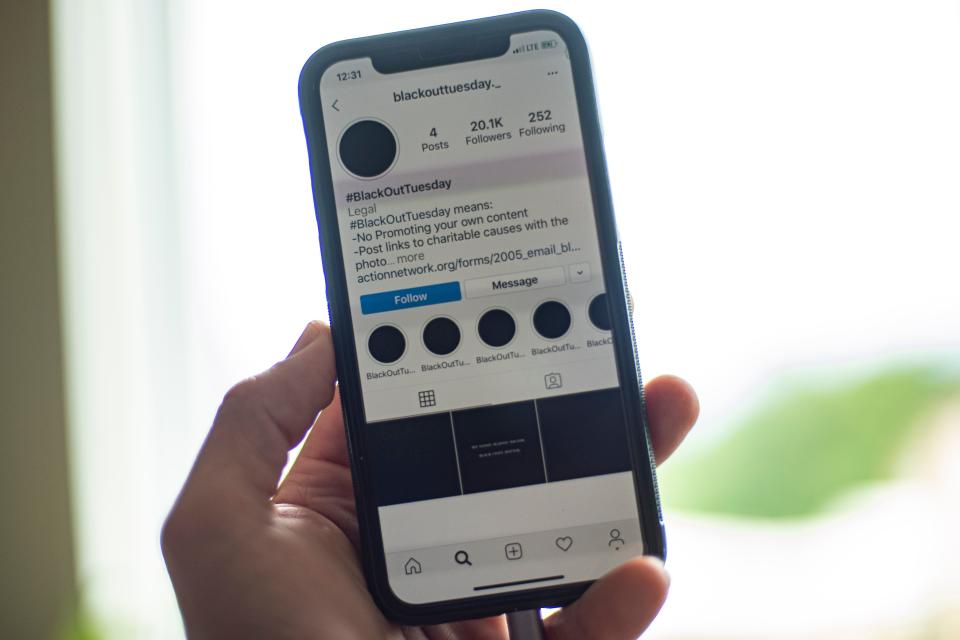
Big data
An entire industry cropped up years ago to mine the flow of social media posts and location information and sell off those insights, primarily for marketing purposes but also often to law enforcement. Some of those companies, like Geofeedia, lost access to the “firehose” of data from companies like Twitter after public backlash over privacy violations. Users are often unaware or unable to opt out of these services for applications to function, or don’t want to make their profiles private.
Companies like X-Mode Social, a previously little-known location data company, has already demonstrated its ability to track cellphone location data of people traveling around the country, publishing heat maps of spring breakers violating stay-at-home orders during the pandemic. The company and its recent partner, the data analysis firm Tectonix, have argued they are committed to privacy and anonymized data, but it’s unclear every firm would abide by those standards.
Other companies, some of which have posted statements of solidarity with protesters, have also provided private data to law enforcement agencies, including Amazon’s home surveillance company, Ring, as well as neighborhood social network Nextdoor, which released a product designed specifically for use by public agencies in February.
Some police departments, like the super-powerful New York Police Department, are more heavily outfitted than others. The Brennan Center for Justice created a database of the different surveillance technologies in use by the NYPD, including facial recognition technology, video analytics, social media monitoring, criminal group databases, a predictive policing program that feeds data into an algorithm to locate possible “hot spots” of crime, Stingrays, drones, X-ray vans and a vast DNA database, among other technologies.
In an analysis of the impact of these tools, Angel Diaz, a counsel within the Brennan Center’s Liberty and National Security Program who led the center’s research on the NYPD’s surveillance tech, wrote that tools like facial recognition and video analysis not only are disproportionately used on people of color but also make more mistakes and lead to false positives.
“The fact that it doesn’t work doesn’t mean it isn’t going to be used,” said Diaz. “There’s a high probability that people will be misidentified and swallowed up into an investigation that has nothing to do with them,” he told Yahoo News during a phone interview.
“There is such an overt policing of people of color,” he said. And for those who choose to protest the police’s practices, “you’re subjecting yourself to future policing” when you’re surveilled participating in protests, your image and likeness often stored away in databases for future investigations.
_____
Read more from Yahoo News:


